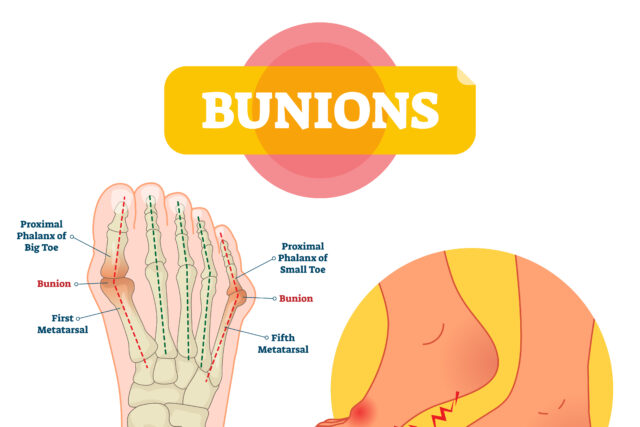Unlock the secret of Hollow Feet Management with our expert guide on targeted exercises. Strengthen and flex your way to improved foot health and stability, tailored for those with high arches. Dive into our step-by-step routine for lasting relief and enhanced mobility.

Introduction
Dealing with hollow feet, or Pes Cavus, requires more than just daily routines; it demands a specialized approach to exercise that targets the unique structure of your feet. This guide is your ultimate companion in navigating through the complexities of hollow feet, offering a curated selection of exercises designed to strengthen, stretch, and enhance the functionality of your feet. Whether you’re looking to alleviate pain, improve flexibility, or simply maintain healthy foot posture, our comprehensive exercise regimen is here to transform your foot health journey.
Table of Contents
Targeted Exercises for Hollow Feet Management
Navigating through hollow feet requires a specialized exercise regimen designed to strengthen your feet, enhance flexibility, and improve functionality. Here’s a comprehensive guide to exercises specifically curated for individuals with hollow feet, complete with detailed instructions and the benefits of each exercise to ensure maximum effectiveness:
1. Towel Arch Stretch
Objective
To increase the flexibility of the foot’s arch and alleviate stiffness.
Benefits
Focuses on stretching the arch and calf muscles, aiding in flexibility and pain reduction associated with high arches.

Instructions
- Sit with legs straight and a towel wrapped around your foot’s ball.
- Gently pull the towel towards you, straightening your knee to stretch the arch and calf.
- Hold for 15-30 seconds, then repeat 2-3 times per foot.
2. Heel Balance Walk
Instructions
- Stand and lift the front part of your feet, balancing on your heels.
- Walk forward on your heels for 30-60 seconds, maintaining small, controlled steps.
Objective
Strengthen the muscles around the heel and ankle to improve stability.
Benefits
Enhances heel strength and balance, crucial for those with hollow feet prone to instability.

3. Toe Lifts
Objective
Strengthen the arch and toe muscles to support the high arch.
Benefits
Targets arch-supporting muscles, bolstering strength and stability.

Instructions
- Sit with feet flat and heels pressed down.
- Lift your toes as high as possible, then lower them slowly.
- Perform 10-15 reps for 2-3 sets, focusing on engaging the arch muscles.
4. Marble Pickups
Instructions
- Scatter marbles on the floor with a bowl nearby.
- Using your toes, pick up each marble and place it in the bowl.
- Alternate feet after completing the set.
Objective
Improve toe dexterity and underfoot muscle strength.
Benefits
Enhances muscle coordination and control in the toes, vital for foot health.

5. Elevated Calf Raises
Objective
Strengthen calf muscles to better support foot arches.
Benefits
Strengthens calves, providing stability and support for the arches.

Instructions
- Stand with the balls of your feet on a raised surface.
- Raise your heels to the highest point, then lower them below the step level.
- Aim for 10-15 reps across 2-3 sets, focusing on smooth, controlled movements.
6. Plantar Fascia Stretch
Instructions
- Stand an arm’s length from a wall, one foot behind the other.
- Keep the back leg straight, heel down, and bend the front knee slightly, leaning into the wall.
- Hold for 15-30 seconds, then switch legs, repeating 2-3 times per leg.
Objective
Alleviate tension in the plantar fascia and Achilles tendon.
Benefits
Reduces tightness, crucial for easing discomfort associated with hollow feet.

7. Towel Scrunches for Arch Strength
Objective
Fortify foot muscles to enhance arch support.
Benefits
Targets intrinsic foot muscles, improving arch stability.

Instructions
- Sit with a towel spread in front of your feet.
- Using your toes, scrunch the towel towards you, then spread it back out.
- Complete 2-3 sets of 10-15 scrunches, engaging the arch muscles.
8. Ankle Circles for Mobility
Instructions
- Extend one leg and rotate the foot in wide circles, 10 times in each direction.
- Switch feet after completing circles in both directions.
Objective
Increase ankle mobility and flexibility.
Benefits
Promotes blood circulation and flexibility in the ankle, supporting overall foot health.

Incorporating these exercises into your daily routine can significantly aid in managing hollow feet, enhancing strength, flexibility, and overall foot health. Remember, consistency is key to seeing improvements, so make these exercises a regular part of your foot care regimen for optimal results.
Crafting an Effective Exercise Routine for Hollow Feet
To manage hollow feet effectively, it’s crucial to develop a balanced and thoughtful exercise routine. Here are additional insights to ensure your regimen is both comprehensive and beneficial:
Harmonize Strengthening and Stretching: A well-rounded routine should equally focus on strengthening and stretching exercises. This balanced approach aids in addressing the complexities of hollow feet by enhancing both muscle strength and flexibility.
Prioritize Proper Technique: Quality over quantity is key. Concentrate on performing each exercise with correct form to maximize benefits and minimize injury risks.
Customize Your Routine: If certain exercises cause discomfort beyond normal muscle fatigue, don’t hesitate to modify them. Consulting with a healthcare professional can provide customized recommendations suited to your needs.
Evaluate and Adjust Regularly: Periodically assess the impact of your routine. Adjustments may be necessary to continue challenging your body and achieving optimal results.
Support with Appropriate Footwear and Orthotics: Complement your exercise efforts with footwear and orthotics specifically designed for high arches. These supportive measures can significantly improve foot function and comfort.
Introduce Variety: Incorporating a diverse array of exercises ensures a comprehensive approach, targeting different muscle groups and preventing monotony.
Progress Gradually: Start with a manageable number of repetitions and sets, gradually increasing intensity as your strength and flexibility improve, to encourage continuous progress without overexertion.
Listen to Your Body: Pay attention to how your body responds to each exercise. Adjust your routine to avoid pain, focusing on achieving a gentle stretch and effective muscle engagement.
Maintain Consistency: Regular practice is essential for noticeable improvements. Aim to integrate these exercises into your daily schedule for sustained benefits.
Explore Complementary Activities: Activities like yoga or Pilates, known for their emphasis on strength, flexibility, and balance, can be excellent additions to your routine.
Stay Hydrated: Proper hydration supports optimal muscle function and recovery, making it a crucial aspect of your exercise regimen.
Seek Professional Guidance: For a routine tailored to your specific needs and adjustments for persistent pain, consulting with a physical therapist or podiatrist is advisable.
By following these insights, you can create an effective exercise routine that addresses the needs of hollow feet, promoting strength, flexibility, and overall foot health.
FAQ Section
Q1: What are hollow feet?
Hollow feet, also known as Pes Cavus, are characterized by a higher than normal arch in the foot. This condition can lead to challenges in stability and pain due to the uneven distribution of weight across the foot.
Q2: How can exercises help manage hollow feet?
Exercises tailored for hollow feet focus on strengthening and stretching the muscles and ligaments in the foot and ankle, improving flexibility, stability, and reducing pain associated with the condition.
Q3: Are these exercises suitable for everyone with hollow feet?
While these exercises are designed for individuals with hollow feet, it’s important to consult with a healthcare professional before starting any new exercise regimen, especially if you have existing health concerns or experience pain during exercises.
Q4: How often should I perform these exercises?
Consistency is key. Incorporating these exercises into your daily routine is recommended for the best results. However, listen to your body and adjust the frequency as needed.
Q5: Can these exercises replace the need for professional treatment?
While these exercises are beneficial for managing symptoms of hollow feet, they should complement professional medical advice and treatment plans, especially for severe cases.
Conclusion
Managing hollow feet doesn’t have to be a daunting task. With the right exercises, you can significantly improve your foot health, flexibility, and stability. Remember, the journey to better foot health is a marathon, not a sprint. Incorporate these exercises into your daily routine, listen to your body, and adjust as necessary. For personalized advice and treatment plans, always consult with a healthcare professional. Embrace the path to stronger, healthier feet today.



MOST COMMENTED
Animal-Based Proteins / Casein Protein / Dietary Protein / High-Protein Diets / Pea Protein / Plant-Based Proteins / Protein / Protein Deficiency / Protein Supplements / Proteins / Whey Protein / Whey Proteins
Is Protein Powder Safe for Teenagers and Children?
Animal-Based Proteins / Casein Protein / Dietary Protein / High-Protein Diets / Pea Protein / Plant-Based Proteins / Protein / Protein Deficiency / Protein Supplements / Proteins / Whey Protein / Whey Proteins
Unlock the Power of Proteins for Optimal Gut Health
Multivitamin
Total Health: Multivitamin for Active Lifestyles
Multivitamin
WellnessFusion: Complete Multivitamin Support
Dietary Supplement
Revitalize Your Health: The Magic of Red Yeast Rice Capsules
Foot care / Foot Health
Revitalize Your Foot Care Routine: Essential Tips for Optimal Foot Health
Foot Problem / Diabetics / Foot Health
Diabetics: Mastering Footwear Selection for Enhanced Foot Health and Ultimate Comfort
Exercises and Footwear Tips for Hammertoe Relief / Foot care / Foot Health / Foot Pain / Foot Problem / Hammertoes
Unlock Effective Exercises and Footwear Tips for Hammertoe Relief
Hammertoes / Foot Health / Foot Pain / Foot Problem
Unlock Relief: Essential Guide to Hammertoes Causes, Symptoms, and Treatments
Foot Problem / Foot Health
Revolutionize Your Recovery: Natural Remedies for Plantar Fasciitis – Fresh Home Keepers